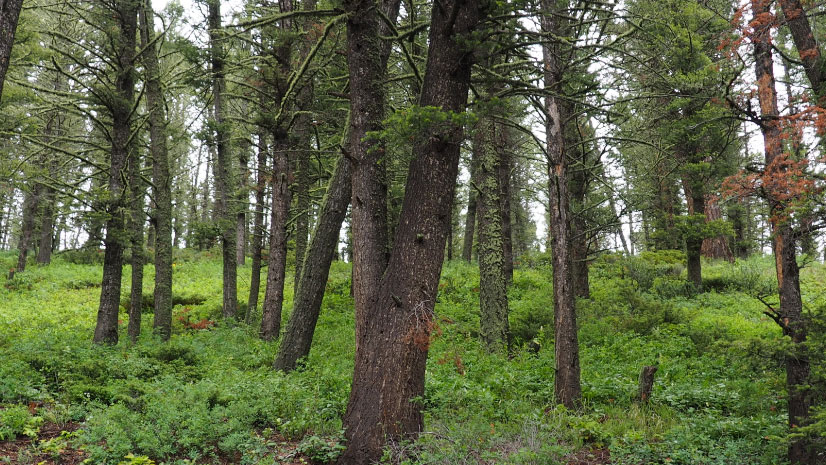The global fire season has expanded. Summers are longer, hotter, and dryer. Strong wind events continue to amplify wildland fire intensity. These changing environmental conditions escalate the impact wildfires have on landscapes and communities. Therefore, it is necessary for land management and fire service organizations to identify and integrate available tools to address these risks.
Wildland fires require three ingredients: fuel, oxygen, and heat. Removing any one of these ingredients stops the propagation of fire. A wildland fire may be sparked in a variety of ways, including burning debris, unattended campfires, arson, or lightning. Fire starts are generally divided into two categories, human caused or naturally caused. According to the National Interagency Coordination Center (NICC), between the years of 2016 and 2020, 88 percent of all wildfires in the United States were human caused.

In Southeast Asia, for example, wildland fires are largely caused by illegal agricultural fires linked to industrial-scale slash-and-burn practices. Burnt land sells for higher prices and is often used for palm oil and pulpwood production. It is believed that large-scale burning is cheaper and faster than traditional cutting and clearing using excavators and other machinery.
Wildland fires cause varying localized and transboundary damages. These include loss of biodiversity and the release of carbon into the atmosphere, contributing to climate change, as well as significant firefighting costs incurred by the community. In 2019, the World Bank estimated that Indonesia alone suffered US$5.2 billion in losses to the agriculture, industry, trade, tourism, transportation, and environmental sectors. In 2015, smoke and haze were estimated to have caused between 40,000 and 100,000 deaths across Southeast Asia.

To fight wildland fires, firefighters must first perform a size-up, a process by which responders assess an incident’s status and are then able to order and assign needed resources. ArcGIS provides firefighters with tools to identify, analyze, and understand the landscape with dynamic maps that provide the situational awareness decision-makers need to save lives and protect property. In addition to evaluating weather conditions, firefighters need to mark control lines, escape routes, natural firebreaks and barriers, fire access points, and safety zones. They may use fixed-wing and rotary-wing aircraft to monitor the blaze and quickly drop high volumes of water and fire retardant.
Esri’s ArcGIS system has been used for wildland fire suppression operations for many years to support resource management, field data collection, shared situational awareness, imagery management and exploitation, damage assessment, and community engagement in support of fire suppression efforts. However, looking beyond suppression and response, Esri’s ArcGIS system supports the full life cycle of wildland firefighting from preparedness and mitigation to rehabilitation. This enables agencies to understand the prefire risks that exist across landscapes, engage in preparedness and planning efforts, implement meaningful hazardous fuel reduction projects, and eventually recover after a wildfire.
Understanding the Landscape
By mapping and analyzing wildland fire risk, agencies can better understand the landscape and prioritize projects that reduce a community’s vulnerabilities. This data-driven process is the foundation for community planning, the designing of mitigation projects, and determining future resource requirements. Wildland fire GIS data and maps allow agencies and local authorities to visualize data and identify current risks as well as monitor historical trends that can inform a more real-time approach to changing conditions and the potential impact to residents, infrastructure, and the environment.

Fire staff use ArcGIS to understand variables that influence fire behavior. For instance, firefighters view factors such as topography, vegetation type, and weather to determine locations with the highest fire risk. These factors are often compared against high-value resources such as sensitive habitat and ecosystems, critical infrastructure, cultural resources, sensitive soil types, important watersheds, and housing developments to pinpoint those values with the greatest likelihood to be impacted by wildfire. Agencies also determine risk by locating historical fire occurrence and identifying potential ignition sources such as power lines, roads, industrial areas, and housing. Through identification of high-risk areas and their proximity to important values, agencies can create a holistic wildfire risk analysis that informs essential fire management planning and mitigation projects.
Promoting Preparedness and Prevention

Using ArcGIS, fire staff work in the field to collect and identify code violations, opportunities for defensible space, and where community education initiatives are needed to increase local fire resiliency. Utility providers can assess their networks for vulnerabilities related to their energy infrastructure and right-of-way clearance practices, so they can anticipate actions needed to reduce fire ignitions during critical fire weather. These maps also aid teams in evacuation planning and modeling by helping them define, understand, and anticipate population totals, demographics, social inequities, and traffic patterns that are key to a safe and efficient evacuation.
Agency staff use ArcGIS to gather data and analyze the effectiveness of current Wildland-Urban Interface (WUI) building codes and fire safety regulations, such as those related to defensible space. With ArcGIS-based mobile applications and analytical capabilities, staff can analyze standards with verified field data. They can also analyze information about local vegetation, weather, and topography to inform an effective defensible space design—a cost-effective way to protect a structure from wildfire. The results of these efforts are easily incorporated into planning documents like Community Wildfire Protection Plans (CWPPs) that individual communities then utilize to further plan for wildfire.
Mitigating Risk
Firefighters use the results of a wildland fire risk analysis to develop comprehensive planning and mitigation projects. ArcGIS helps firefighters map and target where fire prevention efforts, hazardous fuels reduction projects, and potential operational delineations (PODs) exist. PODs can be thought of as spatial units or containers that identify potential control features, such as roads and ridgetops, within which relevant information on forest conditions, ecology, and fire potential can be summarized.
Fuel management programs use proven methodologies to integrate fire and fuel management practices with community or land management priorities. These programs often benefit from ArcGIS-based fire behavior models that help predict the impacts of hazardous fuel treatments within a given community. These models help determine the best treatment methods to be used to meet planning and land management goals. Agencies also use the Esri ArcGIS system, including ArcGIS StoryMaps, for communicating information to the public and briefing executives. Often, ArcGIS Hub sites are configured for community and stakeholder engagement, allowing agencies to communicate a holistic vision for risk reduction, mitigation goals, and other relevant wildfire information.
ArcGIS Dashboards is a useful tool to visualize the results of this type of effort. With ArcGIS Dashboards, decision-makers can maintain a high level of situational awareness though viewing live program metrics and mobile field application data collected from the firefighters in the field.

It’s important to note that fire can also play a vital role in promoting good forest health and the maintenance of certain ecosystems. Fire managers use ArcGIS to determine where to place prescribed fire on the landscape while considering variables such as fuel type, topography, and wildlife habitat. Modeling shows how a prescribed fire will behave and spread under a variety of conditions, and how the smoke it generates may disperse and impact vulnerable populations. With ArcGIS, fire managers can develop the appropriate prescription under which a prescribed fire will achieve the greatest benefit.
Observing the effects fire has on an ecosystem is an essential part of forest and fuel management. By visualizing fire effects data, land management agencies are able to recognize patterns in plant mortality and burn severity that inform future recovery actions.
Recovery and Rehabilitation
After a wildfire, managing rehabilitation is critical to reopening a community and avoiding cascading consequences. Information such as burn severity, vegetation type, slope, and other variables can be combined with community infrastructure data to identify areas that need emergency stabilization efforts as well as those that require long-term restoration projects. Staff can analyze imagery to determine where fires burned more intensely, where substantial rehabilitation is required to support the future health of the forest, and where postincident runoff might result in erosion or even damaging landslides and debris flows.
After an extensive fire like the Camp Fire (California, 2018) occurs, the process of documenting and managing the removal of debris is a difficult but necessary task for recovery and rehabilitation. With ArcGIS, agencies collect locations of debris and hazardous materials (hazmat) and then direct debris removal resources where they are needed most. Using maps and dashboards, you can monitor and evaluate recovery efforts while providing transparency to elected officials and the public.
Catastrophic wildfires can impact forest ecosystems by reducing vegetation, damaging soil, and increasing erosion. Often, this damage can be attributed to how intensely a fire burns. The greater the severity, the higher the chances that there may be negative impacts to watersheds or soil function. Using ArcGIS and imagery, GIS specialists can analyze a wildfire’s burn severity to identify areas showing signs of damage. These areas can be targeted with postfire rehabilitation measures and stabilization efforts to safeguard from further impacts. Field teams deployed with ArcGIS to collect information on the ground are empowered to refine rehabilitation and recovery efforts and to communicate with the community about long-term rehabilitation.
The recovery and rehabilitation process can take decades. When agencies map and monitor the changes over time using ArcGIS, they can develop and modify recovery plans and manage long-term efforts.
Additional Resources
- Wildfires Resource Hub (Get maps, datasets, applications, and more to support wildfire preparedness and response efforts.)




